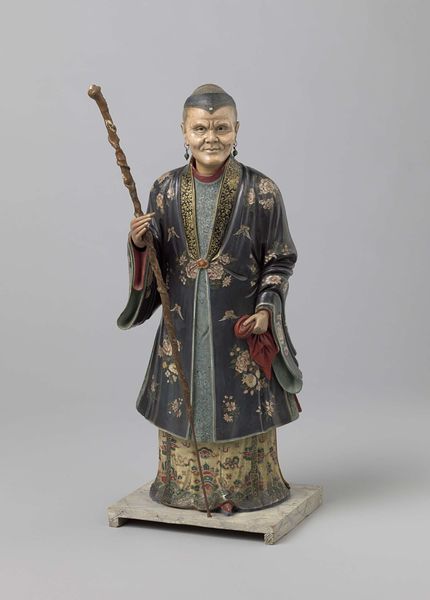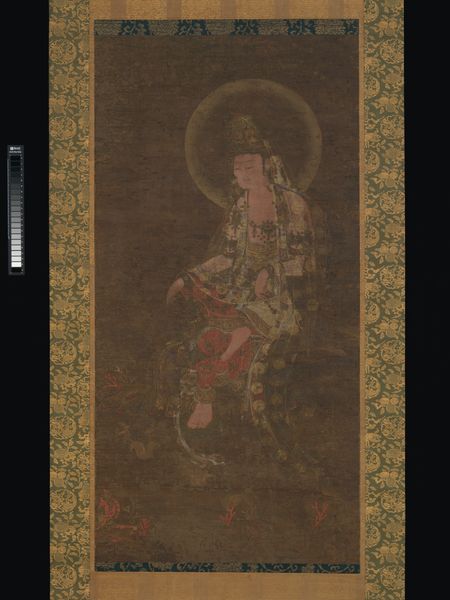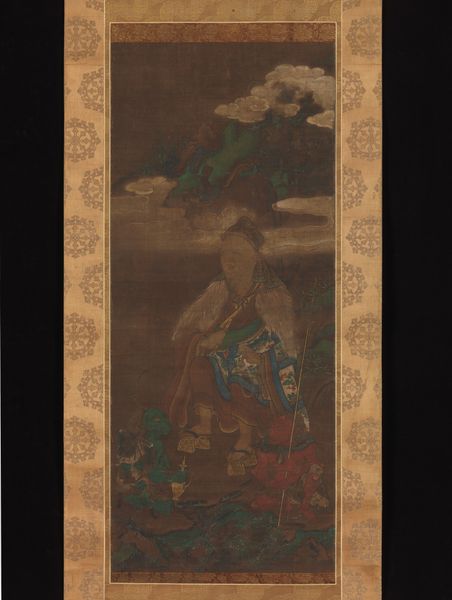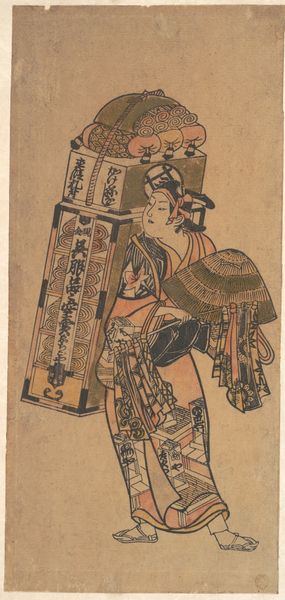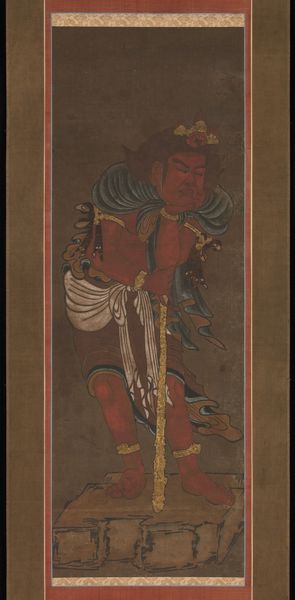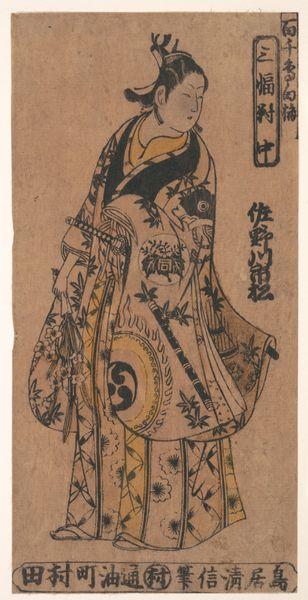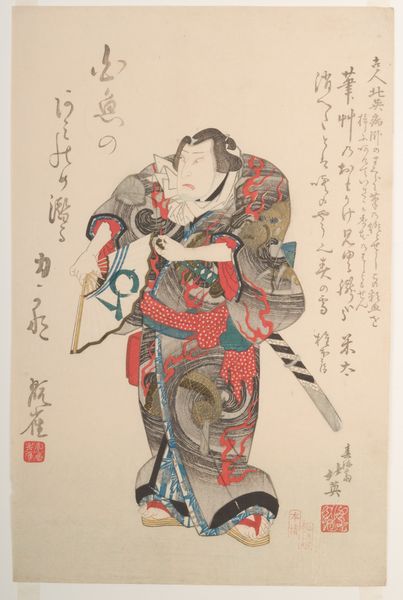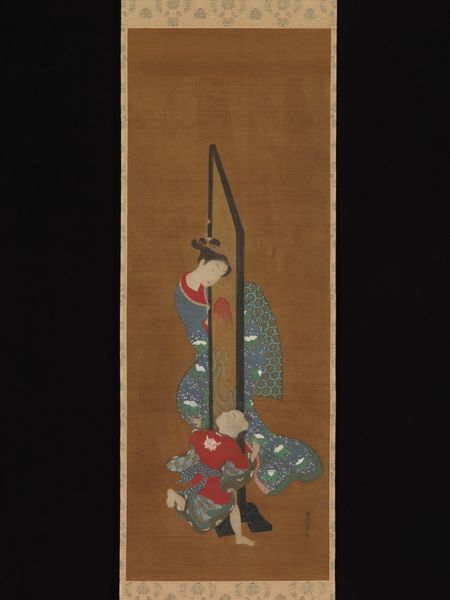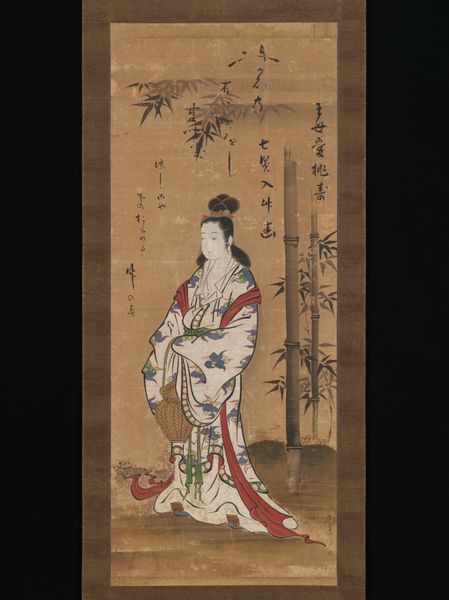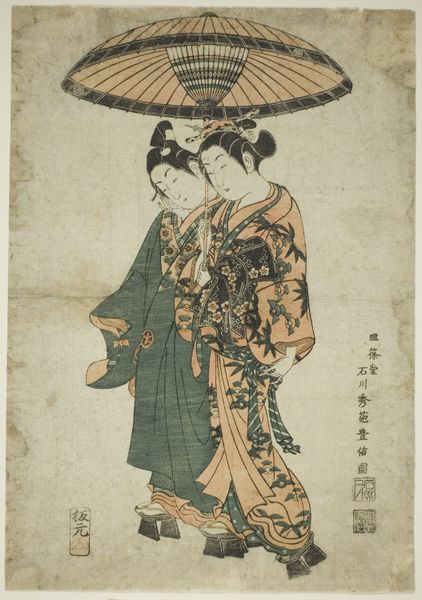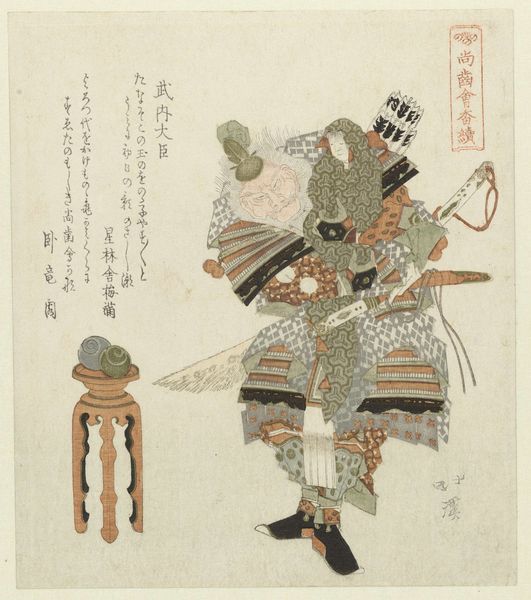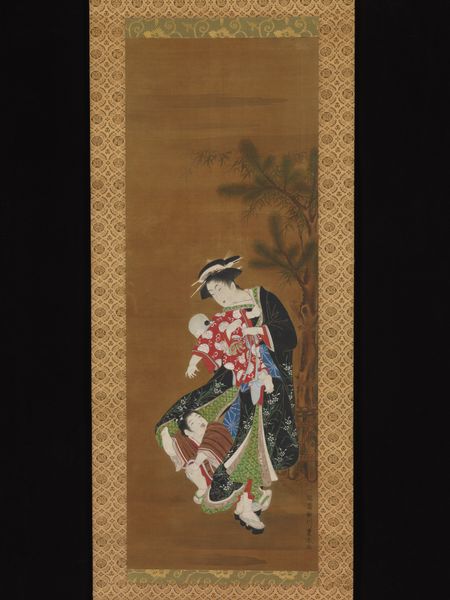
carving, sculpture, wood
#
portrait
#
medieval
#
carving
#
sculpture
#
asian-art
#
figuration
#
sculpture
#
wood
Dimensions: 18 13/16 × 9 × 6 9/16 in. (47.78 × 22.86 × 16.67 cm)
Copyright: Public Domain
This wooden sculpture depicts Bishamonten, one of the Four Heavenly Kings in Buddhist tradition. Clad in armor, he embodies strength and protection, a guardian against evil. Note his commanding stance atop two defeated demons, symbols of conquered adversity. In his right hand, he holds a miniature pagoda, representing the divine treasure house and his role as a bestower of wealth. The figure of Bishamonten, or Vaishravana in Sanskrit, can be traced back to ancient Vedic traditions, where he was associated with the north direction and wealth. This motif of a divine king, armed and standing over vanquished foes, echoes in various cultures, from Mesopotamian deities to Roman emperors. The persistence of this image across time reveals a deep-seated human desire for protection and prosperity. The fierce expression and resolute posture likely engage us on a subconscious level, appealing to primal instincts for safety and dominance, reflecting our collective memory. Observe how this symbol, born millennia ago, still resonates, evolving, and adapting across cultural landscapes.
Comments
minneapolisinstituteofart about 2 years ago
⋮
In Hindu mythology, each of the four directions is protected by a specific god. These four gods were incorporated into Buddhism as guardian kings at an early period and came to be known in Sanskrit as Lokapalas, or Shiten’nō in Japanese. This sculpture of a warrior represents Bishamonten, the Guardian of the North. The north was believed to be the most dangerous of the cardinal directions and so its protector, Bishamonten, is the strongest of the four guardian kings. Here, wearing heavy armor and carrying a lance and miniature stupa, Bishamonten stands atop two demons, representing threats from the North that he has overpowered.
Join the conversation
Join millions of artists and users on Artera today and experience the ultimate creative platform.
